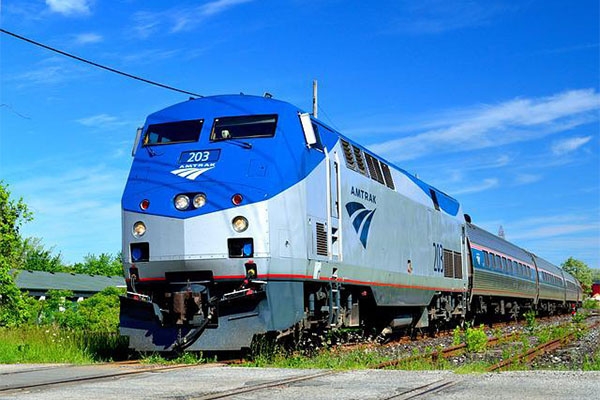The cover of the 2011 annual report for Amtrak, our government-owned passenger train service, celebrates its 40th anniversary as a business. Well, kind of. It can certainly celebrate its endurance as an organization drawing unending support from the U.S. Treasury and its many, many bondholders.
But as a business? I don’t think so.
In every year since 1971 Amtrak has lost money. Real businesses don’t lose money for 40 consecutive years. When they lose money for a year or so the top dogs get heaved. If the losses go on much longer the company is taken over, dismembered and sold for parts. While capitalism can be as dumb, arrogant and shortsighted as government, no one can say capitalism is sentimental. Bad or outmoded products and services die. Good products and services thrive. We benefit.
Sadly, it doesn’t work that way when the enterprise is supported with tax dollars. Amtrak executives have appeared before Congress with plan after plan, swearing to approximate a break-even, but it never materializes. In the late 1970s, when there was pressure to shut it down, Amtrak survived by claiming that pension costs would exceed any benefit in closing shop. Today, an entire generation of workers later, it is still losing money.
How much money? In 2011, in spite of rising ridership, Amtrak collected $2.7 billion in revenue but lost a bit over $1.3 billion. The good news is that the loss is less than double its $763 million loss in 1984, which was a long time ago. So relative to all the other losses our government has, Amtrak is moving toward the accounting obscurity of becoming a federal rounding error.
Then why am I writing about this?
Because a comparison of Amtraks figures with a real business may tell us something about turning this country around. And next time someone running for the Congress or Senate tells you they want to end “waste, fraud and abuse” in Washington, you might ask how they intend to vote, when this perpetual drain comes up.
Here is a thumbnail comparison of Amtrak with a real business that I love, Southwest Airlines. Buckle up. Get those drink coupons out.
Output: Employment from Assets. When I examined this in 1984, Amtrak had total assets of $3.6 billion. Today it has assets of $11 billion. During the same period, its employee count has declined slightly from 21,000 to 20,156. So Amtrak is now using 3 times as much capital to support a modestly lower employment. Good job!
Southwest Airlines assets, meanwhile, have grown from $646 million in assets to a stunning $18.1 billion as its employment grew from 3,934 to 45,392. Massive growth and they are still providing more employment per dollar of capital.
Output: Passenger Seat Miles. Amtrak clocked 4.5 million passenger seat miles in 1984, just under the 4.7 billion of a very young Southwest Airlines. Today Amtrak is pulling some 6.5 billion-passenger miles. That 44 percent growth is not far ahead of our total population growth of 32 percent. Southwest passenger miles, meanwhile, are nearly 21 times larger, a stunning 97.6 billion passenger seat miles, dwarfing Amtrak.
If you divide passenger seat miles by total assets for each enterprise you will find that a dollar of capital employed by Southwest Airlines produces nearly 10 times the passenger seat miles as a dollar of capital used by Amtrak.
Profit and Loss. Amtrak lost $1.3 billion while delivering 4.5 billion passenger seat miles, a loss of about 21 cents a passenger mile. Amtrak also collect $2.7 billion for the same passenger seat miles, indicating passengers paid about 41 cents a passenger mile toward Amtraks total cost of about 62 cents a passenger mile.
Southwest made a small profit while collecting 15.1 cents a passenger mile. Southwest, in other words, costs less per mile than Amtrak loses per mile.
Needless to say, one is a railroad and the other is an airline. But it’s time we stopped running a hobby railroad. If the commuter lines make a profit, keep them or sell them at a profit. If the long glamour trips lose money, sell them off to a private company that will price them to make money. (Are you listening, Orient Express?) When private businesses get in trouble, they divest themselves of money losing operations. It’s time our government did the same.
On the web:
Scott Burns, “The Epic of America— Still,” 07/02/2010
http://assetbuilder.com/blogs/scott_burns/archive/2010/07/02/the-epic-of-america-still.aspx
Scott Burns, “Say Goodbye, Choo-Choo,” 12/14/1999
http://assetbuilder.com/blogs/scott_burns/archive/1999/12/14/say-goodbye-choo-choo.aspx
Scott Burns, “Yes, We Love Our Trains,” 1/11/2000
http://assetbuilder.com/blogs/scott_burns/archive/2000/01/11/Yes_2C00_-We-Love-Our-Trains.aspx
Amtrak annual report
http://www.amtrak.com/servlet/ContentServer/Page/1241245669222/1241256467960
Amtrak revenue passenger miles
Southwest Annual Report
http://southwest.investorroom.com/
Photo: Ray Miller from Pixabay
(c) Scott Burns, 2022
